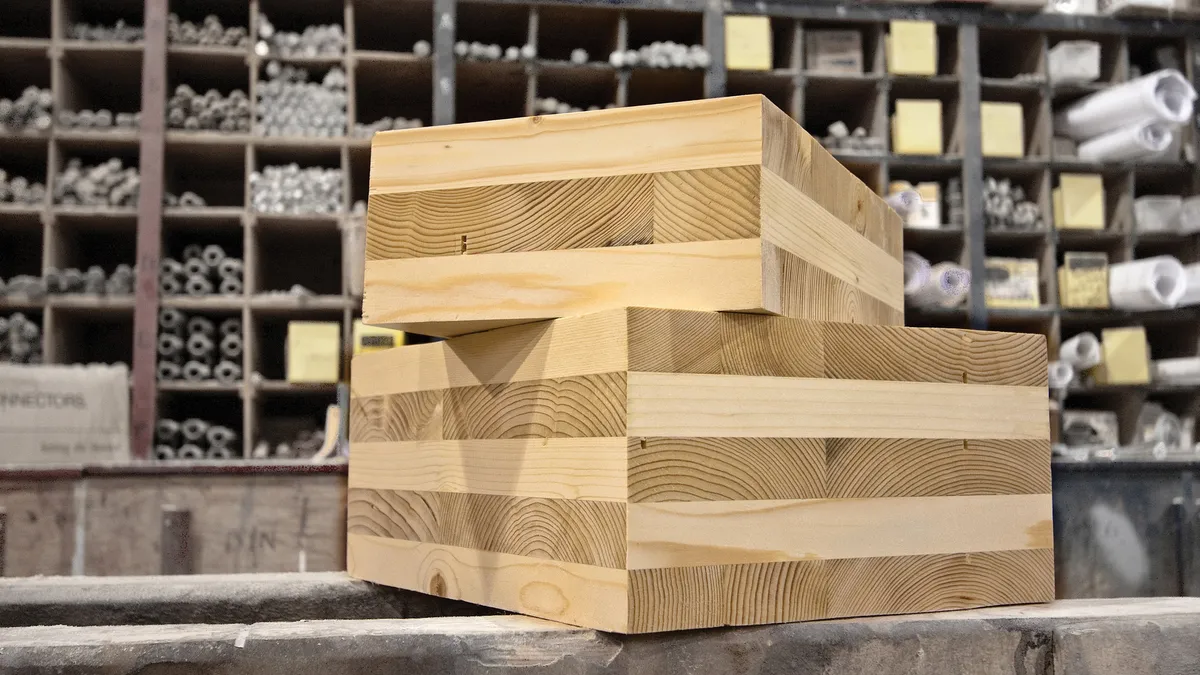Dive Brief:
- The Timber Innovation Act will soon be on its way to President Donald Trump for signature as part of the Agriculture Improvement Act of 2018 (also known as the Farm Bill) that won wide, bipartisan support in both the House and the Senate last week.
- The Timber Innovation Act provides for "performance-driven" research and development, education and technical assistance to increase the use of “innovative" wood products in the U.S. wood building industry. The innovative wood products covered by the act include those in the category of mass timber: cross-, nail- and glue-laminated. The definition also includes laminated strand and veneer lumber. The act also prioritizes analyses of tall wood construction material safety and how wood construction impacts the environment and wildlife. Annual matching grants to advance innovation in wood construction are also part of the act, and those proposals that include the use or retrofitting of sawmills in areas of high unemployment will be given priority.
- In the run-up to the Farm Bill’s passage, Sen. Maria Cantwell (D-Wash.) said, "The Timber Innovation Act will create new jobs across rural Washington by fostering innovation. The building technologies promoted in our bill, like cross-laminated timber, will bring several wins to Washington, including faster construction of buildings, more eco-friendly buildings and new timber jobs.”
Dive Insight:
Those concerned with the safety aspect of building high-rises made out of wood material might draw some comfort in the fact that the federal government — in addition to local building officials and other authorities — will also be invested in taking a look at how safe the materials are.
When an International Code Council ad hoc committee was putting together new, proposed codes for tall wood building construction, the criticism came mostly from those concerned about the fire safety implications; including whether it was safe to build with wood above the fire department’s reach; wood’s resiliency and fire protection characteristics compared to noncombustible materials; if the frequently cited heavy timber characteristic of charring could be misinterpreted as noncombustible and the lack of full-scale fire testing.
Nevertheless, 14 code changes expanding the use of tall wood construction were presented to the ICC at its annual meeting in October, and the preliminary results of an online governmental consensus vote indicate that they will all become part of the 2021 International Building Code.
Washington and Oregon, both states with strong timber industries, have already put regulations on the books to allow for tall wood construction.












